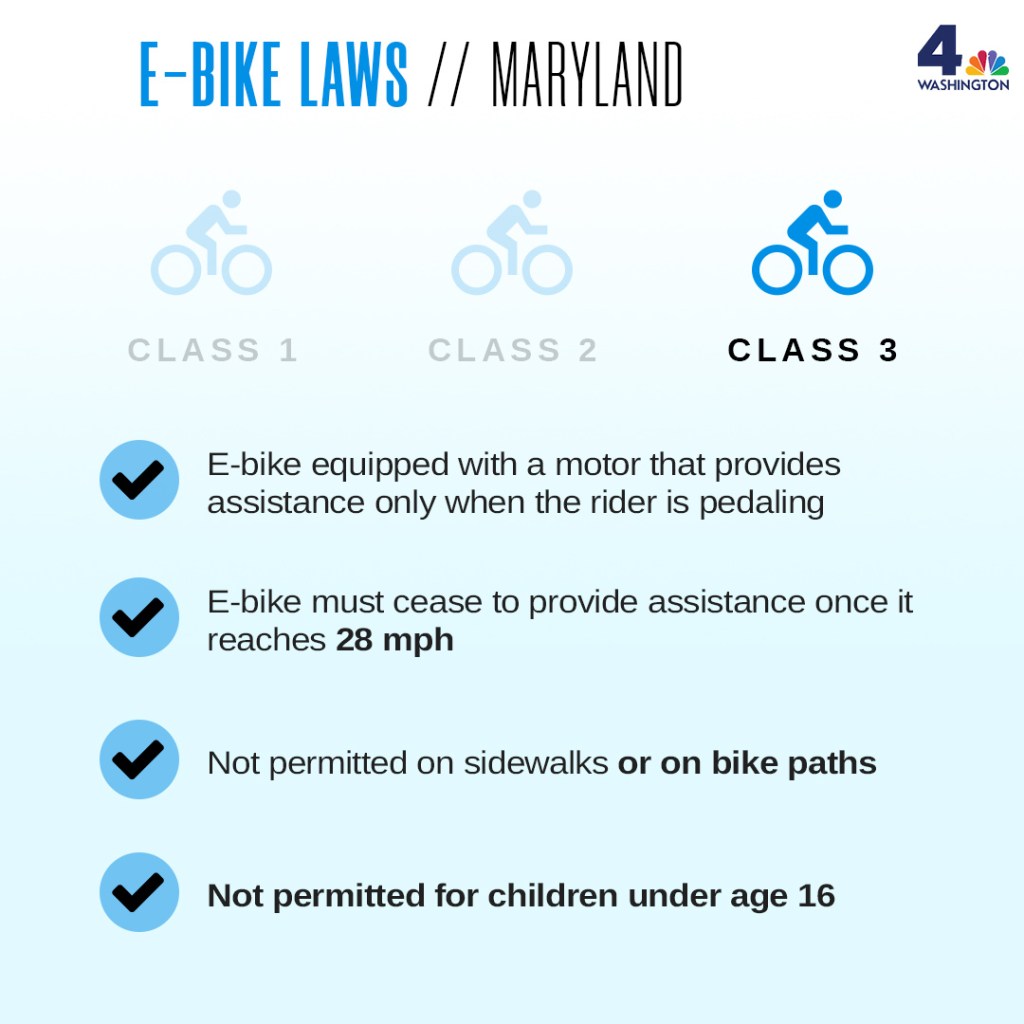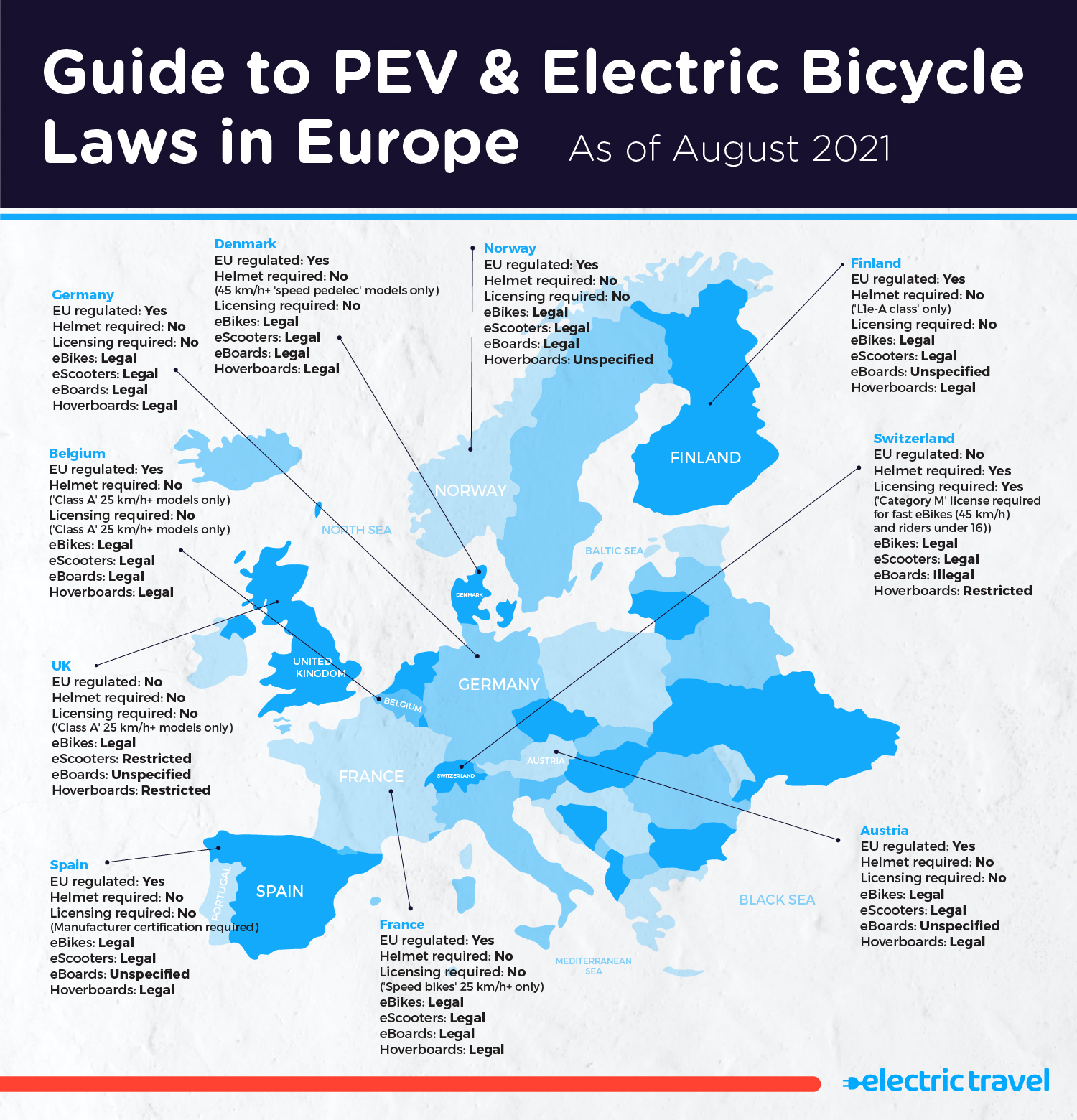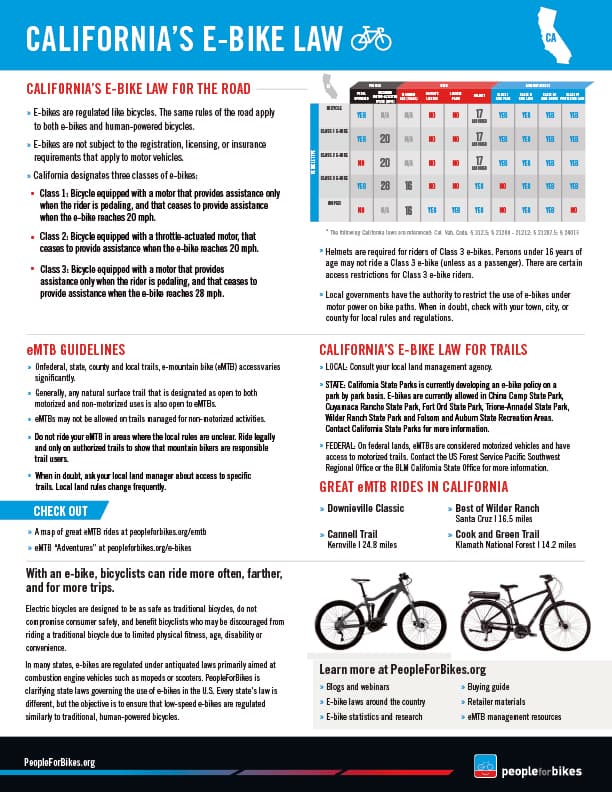What are eBikes and How are They Classified?
Electric bikes, or eBikes, are bicycles equipped with an electric motor that assists with propulsion. eBike laws across the world are significantly influenced by the way these vehicles are classified, which typically depends on motor power, pedal-assist, and throttle usage. In the United States, for example, eBikes are categorized into three classes: Class 1, with a pedal-assist motor that stops providing power at 20 mph; Class 2, featuring a throttle-assist motor that can propel the bike without pedaling, also cutting off at 20 mph; and Class 3, which includes pedal-assist bikes that can reach speeds of up to 28 mph. In Europe, eBikes are classified as those with pedal-assist motors that do not exceed 250 watts and cut off at 15.5 mph. Understanding these classifications is crucial for navigating the complex landscape of eBike laws across the globe.

eBike Laws in Selected Countries
eBike laws across the world vary significantly from one country to another. In the United States, eBike regulations are determined at the state level, resulting in a patchwork of laws. While some states, like California, have comprehensive eBike laws, others have yet to establish clear guidelines. In general, eBikes are treated as bicycles if they meet certain criteria, such as a maximum motor power of 750 watts and a top speed of 20 mph for throttle-assist and 28 mph for pedal-assist models. Class 3 eBikes may require registration and insurance in some states.
In Canada, eBike laws are more uniform, with federal regulations classifying eBikes as power-assisted bicycles if they have a maximum motor power of 500 watts and a top speed of 32 km/h (20 mph). Helmets are mandatory for riders, and eBikes are not allowed on most recreational trails. In Germany, eBikes are classified as Pedelecs (pedal electric cycles) if they have a motor power of up to 250 watts and assist the rider only while pedaling, up to a speed of 25 km/h (15.5 mph). S-Pedelecs, with motor power up to 500 watts and speeds up to 45 km/h (28 mph), are subject to stricter regulations, including mandatory insurance and helmet use.
French eBike laws classify eBikes as speed pedelecs if they have a motor power of up to 250 watts and assist the rider only while pedaling, up to a speed of 25 km/h (15.5 mph). Riders must be at least 14 years old, and helmets are mandatory for those under 18. In China, eBikes are a popular mode of transportation, with regulations allowing motor power up to 400 watts and a top speed of 20 km/h (12 mph). However, many Chinese eBikes exceed these limits, leading to concerns about safety and traffic congestion.

International eBike Laws: Navigating the Complexities
Navigating eBike laws across the world can be a daunting task, especially when traveling or shipping eBikes internationally. With the growing popularity of eBikes, understanding local regulations is crucial to avoid potential legal issues and ensure safe usage. This section explores the complexities of international eBike laws and the importance of compliance.
When traveling with an eBike, it’s essential to research the destination country’s eBike laws and regulations. Some countries may have strict requirements for eBike imports, while others may prohibit certain types of eBikes altogether. For instance, some countries may have lower motor power or speed limits than the eBike’s home country, requiring modifications or additional permits to comply with local laws.
Shipping eBikes internationally can also present challenges. eBike importers must comply with international shipping regulations, such as the International Safe Transit Association (ISTA) standards, and ensure that the eBike is compliant with the destination country’s eBike laws. Non-compliance can result in fines, confiscation, or even legal action.
To stay compliant with eBike laws across the world, eBike owners and importers should consider the following tips:
- Research local eBike laws and regulations before traveling or shipping eBikes internationally.
- Modify or upgrade the eBike to comply with local regulations if necessary.
- Obtain necessary permits or certifications for international eBike shipments.
- Consult with local authorities or eBike experts to ensure compliance with local laws.
In conclusion, navigating international eBike laws can be complex, but understanding local regulations and staying compliant is crucial for safe and legal eBike usage. By following best practices and staying informed, eBike owners and importers can ensure a smooth and hassle-free experience when traveling or shipping eBikes across borders.

How to Stay Compliant with eBike Laws Across the World
As the popularity of eBikes continues to grow, it’s essential to understand and comply with eBike laws across the world. Staying compliant not only ensures legal usage but also promotes safe and responsible eBike riding. This section provides practical tips and guidelines for staying compliant with eBike laws.
Register Your eBike
Registering your eBike is one of the first steps in ensuring compliance with local regulations. Registration requirements vary by country and region, so it’s essential to research the specific requirements for your area. In some cases, registration may involve obtaining a unique identification number, paying a registration fee, and providing proof of ownership.
Obtain Necessary Permits
Depending on the country or region, eBike riders may be required to obtain special permits or licenses to operate their eBikes legally. For instance, some countries may require a valid driver’s license or a special eBike permit. It’s essential to research the specific permit requirements for your area and ensure that you have the necessary documentation before operating your eBike.
Follow Local Traffic Rules
Following local traffic rules is crucial for staying compliant with eBike laws and promoting safe riding. Traffic rules for eBikes may include speed limits, helmet requirements, right-of-way rules, and lane usage regulations. It’s essential to familiarize yourself with the specific traffic rules for eBikes in your area and adhere to them at all times.
Stay Informed About Changes in Regulations
eBike laws and regulations are constantly evolving, so it’s essential to stay informed about changes in regulations. Regularly checking local government websites, joining eBike advocacy groups, and attending community meetings can help you stay up-to-date on the latest eBike laws and regulations in your area.
Consider eBike Laws When Traveling
When traveling with your eBike, it’s essential to research the specific eBike laws and regulations for your destination. Some countries may have different motor power or speed limits, requiring modifications or additional permits to comply with local laws. It’s also essential to ensure that your eBike is compliant with international shipping regulations if you plan to ship it overseas.
Benefits of Compliance
Staying compliant with eBike laws not only ensures legal usage but also provides several benefits for eBike riders. Compliance can help promote safe and responsible riding, reduce the risk of accidents and injuries, and minimize potential legal issues. Additionally, staying compliant can help support the growth and development of eBike infrastructure and promote sustainable transportation options.
In conclusion, staying compliant with eBike laws across the world is crucial for safe and legal eBike usage. By registering your eBike, obtaining necessary permits, following local traffic rules, and staying informed about changes in regulations, eBike riders can promote safe and responsible riding and support the growth and development of eBike infrastructure. When traveling with your eBike, it’s essential to research the specific eBike laws and regulations for your destination and ensure that your eBike is compliant with international shipping regulations.
eBike Laws: The Future of Micromobility
As eBikes continue to gain popularity worldwide, the laws and regulations surrounding their use are constantly evolving. The future of eBike laws will have a significant impact on the growth and development of micromobility, which refers to the use of small, lightweight vehicles for urban transportation. This section discusses the potential changes in regulations, advancements in eBike technology, and the role of eBikes in sustainable transportation.
Potential Changes in Regulations
As eBike technology advances, regulations may need to be updated to keep pace with new developments. For instance, some countries may consider increasing the motor power limit for eBikes or expanding the types of eBikes that are allowed on roads and bike lanes. Additionally, regulations around eBike sharing programs and rental services may become more standardized, making it easier for riders to access eBikes in cities around the world.
Advancements in eBike Technology
Advancements in eBike technology, such as improved battery life, faster charging times, and more sophisticated motor systems, may also impact eBike laws. For instance, as eBikes become more efficient and powerful, regulations around speed limits and motor power may need to be adjusted. Additionally, new technologies such as smart eBikes, which can connect to the internet and provide real-time data on speed, distance, and location, may require new regulations around data privacy and security.
Role of eBikes in Sustainable Transportation
eBikes have the potential to play a significant role in sustainable transportation, reducing carbon emissions and promoting healthy, active lifestyles. As such, governments and regulatory bodies may consider implementing policies and incentives to encourage the use of eBikes over traditional gasoline-powered vehicles. For instance, some cities have already implemented eBike-specific infrastructure, such as dedicated bike lanes and charging stations, to promote the use of eBikes and reduce traffic congestion.
Challenges and Opportunities
Implementing and enforcing eBike laws presents both challenges and opportunities for governments, industry, and consumers. For instance, ensuring that eBike riders follow traffic rules and regulations can be difficult, particularly in densely populated urban areas. However, the growth of eBike usage also presents an opportunity to promote sustainable transportation and reduce carbon emissions. By working together, government, industry, and consumers can shape the future of eBike regulations and ensure that eBikes continue to play a positive role in sustainable transportation.
In conclusion, the future of eBike laws is constantly evolving, with potential changes in regulations, advancements in eBike technology, and the growing role of eBikes in sustainable transportation. By staying informed about eBike laws and regulations, riders can promote safe and responsible usage and support the growth and development of micromobility. The future of eBike laws presents both challenges and opportunities, and by working together, government, industry, and consumers can shape the future of eBike regulations and ensure that eBikes continue to play a positive role in sustainable transportation.

eBike Laws and Safety Considerations
As the popularity of eBikes continues to rise, it is essential to consider the safety concerns associated with these vehicles and the role of laws in ensuring safe usage. eBikes can reach higher speeds than traditional bicycles, making it crucial for riders to take extra precautions to protect themselves and others on the road. This section discusses the importance of protective gear, adhering to speed limits, and sharing roads responsibly.
Protective Gear
Wearing appropriate protective gear is crucial when riding an eBike. Helmets are mandatory in many countries and are essential for protecting the head in case of an accident. Riders should also consider wearing other protective gear, such as gloves, knee and elbow pads, and reflective clothing, to reduce the risk of injury. It is important for eBike laws to require or encourage the use of protective gear to ensure the safety of riders and other road users.
Speed Limits
eBikes can reach higher speeds than traditional bicycles, making it crucial for riders to adhere to speed limits. Many countries have established speed limits for eBikes, particularly for those with higher motor power. Adhering to speed limits is essential for ensuring the safety of riders and other road users, as well as preventing accidents and injuries. eBike laws should establish clear and enforceable speed limits to promote safe usage.
Sharing Roads Responsibly
eBikes are subject to the same traffic rules as traditional bicycles and must share the road with other vehicles. Riders should be aware of their surroundings and follow traffic rules, such as stopping at red lights and yielding to pedestrians. It is important for eBike laws to establish clear guidelines for sharing roads responsibly and to ensure that riders are aware of their responsibilities as road users. By promoting responsible riding behavior, eBike laws can help ensure the safety of riders and other road users.
The Role of Laws in Ensuring Safe Usage
eBike laws play a crucial role in ensuring safe usage and reducing the risk of accidents and injuries. By requiring or encouraging the use of protective gear, establishing clear and enforceable speed limits, and promoting responsible riding behavior, eBike laws can help ensure the safety of riders and other road users. It is important for governments and regulatory bodies to consider the safety concerns associated with eBikes and to establish appropriate laws and regulations to promote safe usage.
In conclusion, safety is a crucial consideration when it comes to eBikes, and eBike laws play an essential role in ensuring safe usage. By requiring or encouraging the use of protective gear, establishing clear and enforceable speed limits, and promoting responsible riding behavior, eBike laws can help ensure the safety of riders and other road users. As eBike technology continues to advance, it is important for governments and regulatory bodies to consider the safety concerns associated with eBikes and to establish appropriate laws and regulations to promote safe usage. By prioritizing safety, eBike laws can help ensure that eBikes continue to be a safe and enjoyable mode of transportation for riders around the world.
eBike Laws and Insurance Requirements
As the popularity of eBikes continues to grow, so does the need for proper insurance coverage. The requirements for eBike insurance vary across the world, making it essential for eBike owners to understand the regulations in their respective countries.
In some countries, eBikes are treated similarly to traditional bicycles regarding insurance. However, due to the increased power and capabilities of eBikes, many jurisdictions require additional coverage to protect riders, pedestrians, and property owners.
For instance, in Germany, eBikes with a motor power of up to 250 watts and a maximum speed of 25 km/h are considered equivalent to regular bicycles. Consequently, eBike riders in Germany are not legally obligated to have insurance. Nevertheless, it is still advisable to have liability insurance to cover potential damages or injuries caused to third parties.
In contrast, some Canadian provinces, such as British Columbia, mandate liability insurance for eBikes capable of exceeding 32 km/h. This requirement ensures that riders are financially responsible for any harm they may cause to others or property while operating their eBikes.
In the United States, eBike insurance requirements are primarily determined at the state level. Some states, like California, do not mandate insurance for eBikes, while others, such as New York, require liability insurance for eBikes operated on public roads.
The benefits of having adequate eBike insurance coverage extend beyond mere compliance with local regulations. Comprehensive insurance policies can protect eBike owners from theft, vandalism, and accidental damage. Moreover, they can provide financial assistance for medical expenses resulting from eBike accidents.
The potential costs and liabilities associated with eBike accidents and theft underscore the importance of having adequate insurance coverage. In many cases, homeowners or renters insurance policies may offer limited coverage for eBikes. However, these policies often have low coverage limits and may not cover damages caused to third parties.
Therefore, eBike owners should carefully review their existing insurance policies and consider purchasing additional coverage if necessary. By doing so, they can ensure that they are fully compliant with local eBike laws and protected against potential financial risks.

Challenges and Opportunities in eBike Laws
eBike laws across the world are continually evolving, presenting both challenges and opportunities for all stakeholders involved. Navigating the complex landscape of eBike regulations requires a concerted effort from government entities, industry players, and consumers alike.
One of the primary challenges in implementing and enforcing eBike laws is the rapid advancement of eBike technology. As manufacturers develop new features and capabilities, regulations must adapt to ensure public safety and maintain order on roads and trails.
For instance, the integration of artificial intelligence and connected technologies in eBikes may require regulators to establish new guidelines for data privacy and cybersecurity. Additionally, the development of high-performance eBikes capable of reaching higher speeds may necessitate stricter safety standards and licensing requirements.
Another challenge in eBike laws is the need for consistent and harmonized regulations across jurisdictions. The lack of standardization in eBike laws across the world can create confusion for eBike users and hinder the growth of the industry.
Despite these challenges, eBike laws also present significant opportunities for promoting sustainable transportation and improving urban mobility. By encouraging the use of eBikes, governments can reduce traffic congestion, decrease air pollution, and promote active lifestyles.
Moreover, the eBike industry can benefit from clear and consistent regulations that foster innovation and growth. By establishing a favorable regulatory environment, governments can attract investment, create jobs, and promote economic development.
Consumers also stand to benefit from well-designed eBike laws that prioritize safety, accessibility, and affordability. Clear regulations can help consumers make informed decisions about purchasing and using eBikes, while also ensuring that they are protected against potential risks and liabilities.
To realize these opportunities, all stakeholders must work together to shape the future of eBike regulations. Governments must engage in meaningful consultations with industry players and consumer groups to develop regulations that are evidence-based, inclusive, and adaptable.
Industry players, for their part, must prioritize safety and innovation in their product designs and actively collaborate with regulators to ensure compliance with eBike laws.
Consumers, too, must take responsibility for understanding and adhering to eBike laws in their jurisdictions. By doing so, they can help promote a culture of safety and respect on roads and trails, while also advocating for regulations that prioritize their needs and interests.


